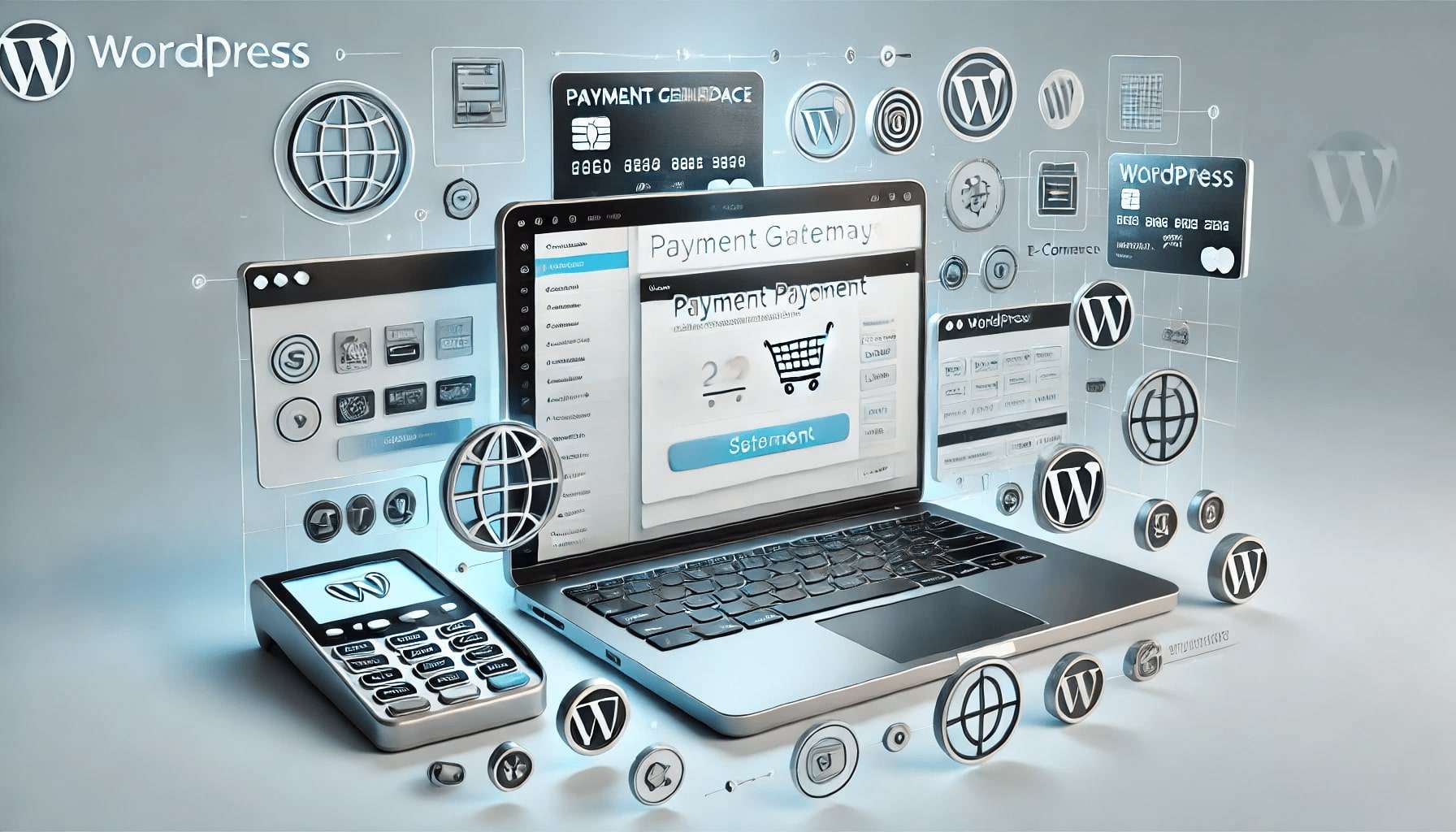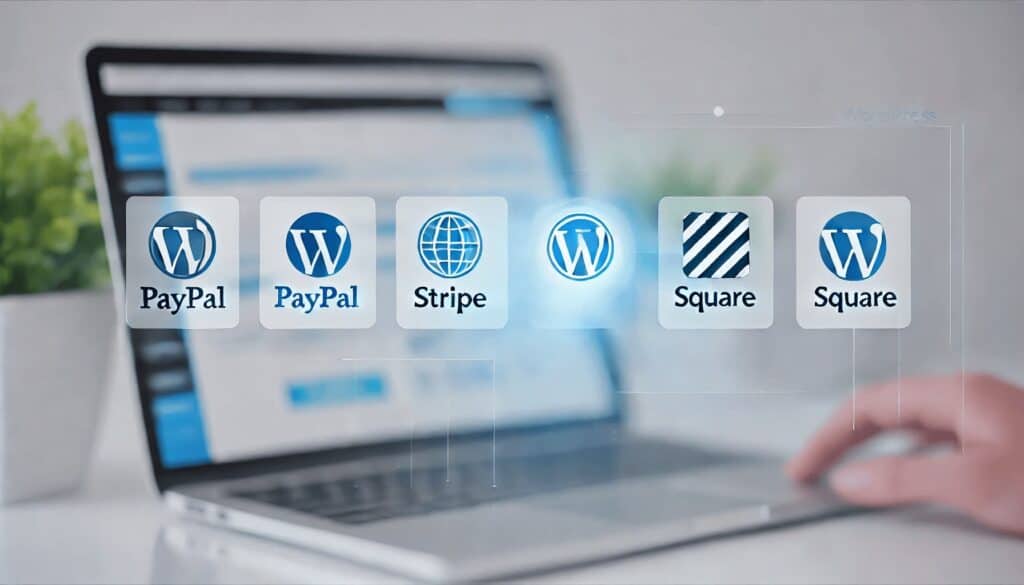
By Crystal Hopkins October 9, 2024
Setting up payment processing on a WordPress site is crucial for any business or individual looking to sell products or services online. Payment processing refers to the secure and efficient handling of online transactions, allowing customers to make payments for their purchases. With the increasing popularity of e-commerce, it is essential to have a seamless payment processing system in place to ensure a smooth and hassle-free experience for both the buyer and the seller.
Understanding the Importance of Payment Processing
Payment processing plays a vital role in the success of an online business. It is the backbone of any e-commerce operation, as it enables businesses to accept payments from customers and facilitates the transfer of funds securely. Without a reliable payment processing system, businesses risk losing potential customers and revenue. It is essential to provide customers with a seamless and secure payment experience to build trust and encourage repeat purchases.
Choosing the Right Payment Gateway for Your WordPress Site

When it comes to setting up payment processing on a WordPress site, choosing the right payment gateway is crucial. A payment gateway is a service that authorizes and processes online payments. It acts as a bridge between the customer, the merchant, and the financial institutions involved in the transaction. There are several factors to consider when selecting a payment gateway for your WordPress site, including transaction fees, security features, supported payment methods, and compatibility with your e-commerce platform.
To choose the right payment gateway, start by assessing your business needs and goals. Consider the types of products or services you offer, your target audience, and your budget. Research different payment gateway providers and compare their features, pricing, and reputation. Look for a payment gateway that offers a user-friendly interface, robust security measures, and excellent customer support. It is also important to ensure that the payment gateway integrates seamlessly with your WordPress site and e-commerce platform.
Setting Up a Payment Gateway Plugin on Your WordPress Site
Once you have chosen a payment gateway, the next step is to set up a payment gateway plugin on your WordPress site. A payment gateway plugin is a software extension that integrates the payment gateway with your WordPress site, allowing you to accept online payments. There are several popular payment gateway plugins available for WordPress, such as WooCommerce, Easy Digital Downloads, and WP Simple Pay.
To set up a payment gateway plugin, start by installing and activating the plugin on your WordPress site. Most payment gateway plugins provide step-by-step instructions on how to configure the plugin settings. You will need to enter your payment gateway credentials, such as API keys or merchant IDs, to establish a connection between your WordPress site and the payment gateway. Once the plugin is configured, you can customize the payment options, such as enabling different payment methods and currencies, setting up tax and shipping options, and configuring email notifications.
Configuring Payment Settings and Options
After setting up the payment gateway plugin, it is important to configure the payment settings and options to meet your specific business requirements. This includes setting the currency, defining the payment methods you want to offer, and configuring tax and shipping options.
Start by selecting the currency in which you want to accept payments. Consider the countries you are targeting and the currencies commonly used by your customers. Most payment gateway plugins support multiple currencies, allowing you to accept payments from customers worldwide.
Next, define the payment methods you want to offer. This can include credit/debit cards, digital wallets, bank transfers, or alternative payment methods like PayPal or Stripe. Consider the preferences of your target audience and the payment methods commonly used in your industry. Offering a variety of payment options can improve customer satisfaction and increase conversion rates.
Additionally, configure tax and shipping options based on your business model. If you sell physical products, you will need to set up shipping options, including shipping rates, delivery methods, and shipping zones. If you sell digital products or services, you may not require shipping options but may need to configure tax settings based on your location and the location of your customers.
Integrating SSL Certificate for Secure Transactions

Security is a critical aspect of payment processing on a WordPress site. To ensure secure transactions and protect sensitive customer information, it is essential to integrate an SSL (Secure Sockets Layer) certificate on your website. An SSL certificate encrypts the data transmitted between the customer’s browser and your website, preventing unauthorized access and ensuring that the information remains confidential.
To integrate an SSL certificate, start by purchasing a certificate from a trusted SSL provider. Many web hosting companies offer SSL certificates as part of their hosting packages. Once you have obtained the SSL certificate, you will need to install and activate it on your WordPress site. This typically involves generating a Certificate Signing Request (CSR), verifying your domain ownership, and installing the certificate on your web server.
After installing the SSL certificate, configure your WordPress site to use HTTPS instead of HTTP. This can be done by updating the site URL in the WordPress settings and ensuring that all internal links and resources are using HTTPS. Additionally, consider implementing security measures such as two-factor authentication, regular backups, and security plugins to further enhance the security of your WordPress site.
Testing and Troubleshooting Payment Processing
Before making your payment processing system live, it is crucial to thoroughly test and troubleshoot the system to ensure that everything is functioning correctly. Testing allows you to identify and resolve any issues or errors that may arise during the payment process, preventing potential problems and ensuring a smooth customer experience.
Start by conducting a test transaction using different payment methods to ensure that payments are processed successfully. Verify that the payment gateway is capturing the necessary customer information, such as billing and shipping addresses, and that the transaction details are accurately recorded in your e-commerce platform or CRM system.
Additionally, test the entire checkout process from start to finish, including adding products to the cart, entering customer details, selecting payment options, and completing the transaction. This will help you identify any usability issues, such as confusing or lengthy checkout forms, and optimize the process for a better user experience.
If any issues or errors are encountered during testing, consult the documentation and support resources provided by the payment gateway provider or the payment gateway plugin developer. They can provide guidance on how to troubleshoot and resolve common issues. If necessary, reach out to their customer support for further assistance.
Optimizing Payment Processing for Better User Experience
To provide a seamless and user-friendly payment experience, it is important to optimize the payment processing system on your WordPress site. A smooth and efficient checkout process can significantly impact conversion rates and customer satisfaction.
Start by simplifying the checkout process as much as possible. Minimize the number of steps required to complete a purchase and eliminate any unnecessary fields or information requests. Offer guest checkout options to allow customers to make a purchase without creating an account, reducing friction and improving the overall user experience.
Consider implementing features such as auto-fill for customer details, real-time validation of form fields, and progress indicators to guide customers through the checkout process. Provide clear and concise instructions and error messages to help customers resolve any issues they may encounter during the payment process.
Furthermore, optimize the performance of your WordPress site to ensure fast loading times and smooth navigation. Slow-loading pages or technical glitches can frustrate customers and lead to abandoned carts. Regularly monitor and optimize your site’s performance by compressing images, caching content, and minimizing the use of external scripts or plugins that may impact page load times.
Frequently Asked Questions about Payment Processing on WordPress
Q.1: What is a payment gateway?
A payment gateway is a service that authorizes and processes online payments, acting as a bridge between the customer, the merchant, and the financial institutions involved in the transaction.
Q.2: How do I choose the right payment gateway for my WordPress site?
Consider factors such as transaction fees, security features, supported payment methods, and compatibility with your e-commerce platform. Assess your business needs and goals, research different payment gateway providers, and compare their features and pricing.
Q.3: How do I set up a payment gateway plugin on my WordPress site?
Install and activate a payment gateway plugin on your WordPress site. Follow the plugin’s instructions to configure the settings and enter your payment gateway credentials to establish a connection between your site and the payment gateway.
Q.4: How do I configure payment settings and options on my WordPress site?
Set the currency, define the payment methods you want to offer, and configure tax and shipping options based on your business model and target audience.
Q.5: Why is SSL integration important for payment processing?
SSL integration ensures secure transactions and protects sensitive customer information by encrypting the data transmitted between the customer’s browser and your website.
Q.6: How can I test and troubleshoot my payment processing system?
Conduct test transactions using different payment methods, verify that customer information is captured correctly, and test the entire checkout process. Consult documentation and support resources for troubleshooting guidance.
Conclusion
Setting up payment processing on a WordPress site is a crucial step for any business or individual looking to sell products or services online. Understanding the importance of payment processing, choosing the right payment gateway, and setting up a payment gateway plugin are essential for a seamless and secure payment experience.
Configuring payment settings, integrating an SSL certificate, testing and troubleshooting the system, and optimizing payment processing for better user experience are key factors in ensuring a smooth and efficient checkout process. By following these steps and considering the frequently asked questions, you can successfully set up payment processing on your WordPress site and provide a seamless payment experience for your customers.